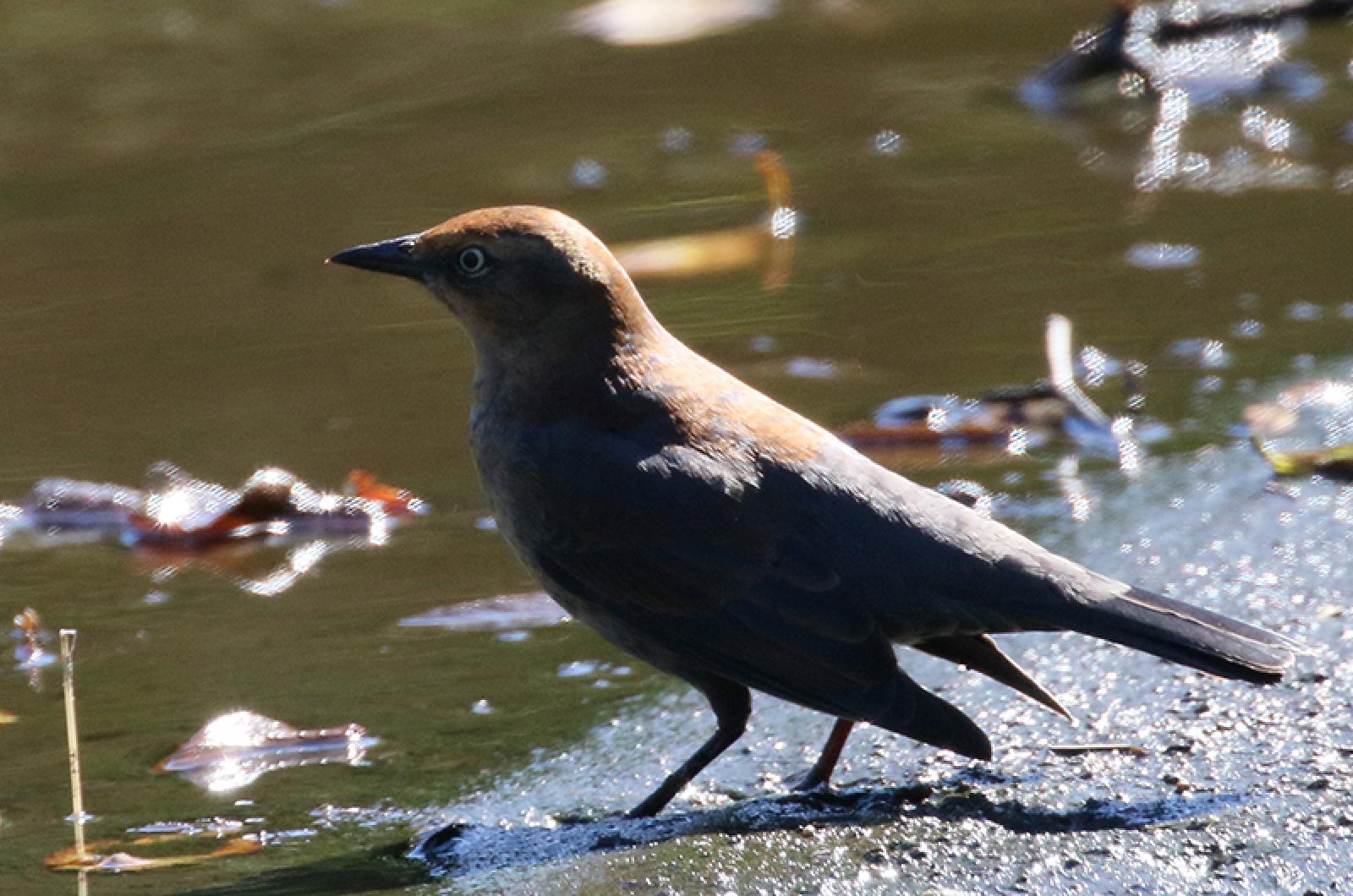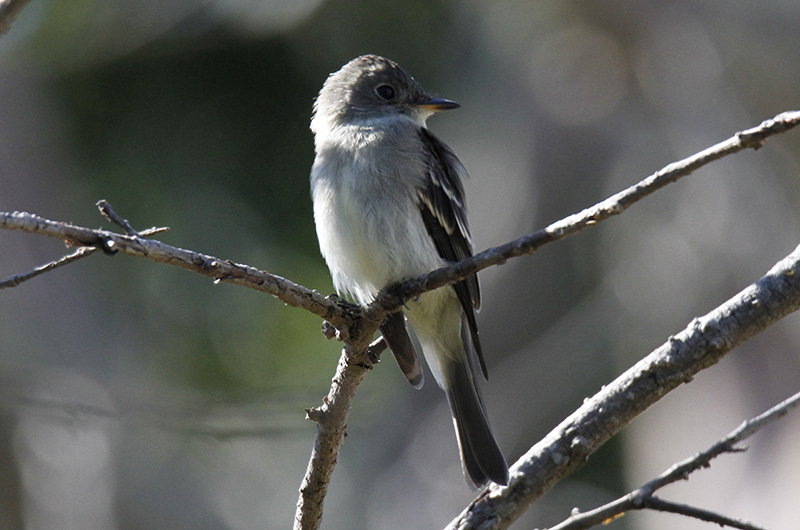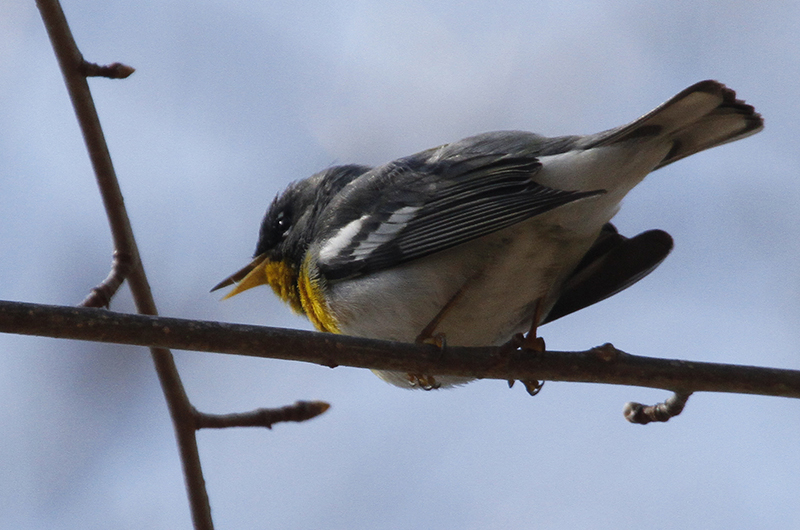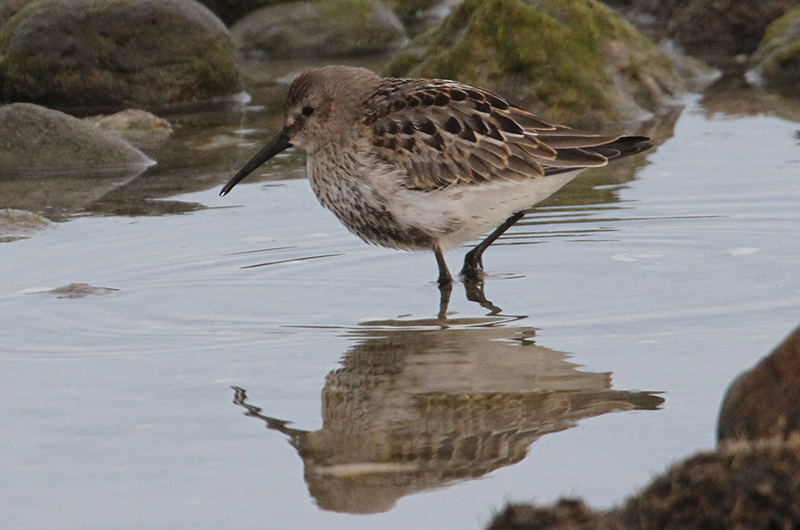In the past 50 years, a majority of bird species have declined by 50 percent or more. That is bad news. But rusty blackbirds are unique, and not in a good way; their population has declined by more than 89 percent since 1966! Unfortunately, we do not know why their population has declined so dramatically. Loss of their preferred winter habitat of wet woodlands on their southeastern U.S. wintering grounds may be one explanation, while another contributing factor may be the high levels of mercury contamination here in the northeast.
The good news is that Ken and Kelly Magnuson found a rusty blackbird at the Gay Head Cliffs on Oct. 7. The males of this species are quite distinctive at this time of the year in their non-breeding plumage: a rich brownish-rusty on the upper body and mostly black on the wings and tail. Historically, this species would migrate through at this time of the year in large flocks rather than just single individuals.
Other Sightings
An interesting report comes from Kate Fowle Meleney, who had a black vulture fly over her head near Crystal Lake on Oct. 3. This formerly southern species is becoming more common throughout the northeast, but is still unusual on the Island. They are not easy to distinguish from the much more common turkey vultures, so photos – when possible – are very helpful. Black vultures are slightly smaller than turkey vultures, but size is difficult to determine in the field unless you see them in a mixed flock containing both species.
Bob Shriber visited Norton Point Beach on Oct. 2 and found the first dunlin of the season. They are usually about the last species of shorebird to migrate through our area, and some of them will stay through the winter. He also spotted lingering American oystercatcher, semipalmated plover and a flock of 10 common terns, as well as the resident black-bellied plover, sanderling and lesser black backed gull.
Nathaniel Sharp is the first to report the arrival of all four of our common winter resident sea ducks when he visited Lucy Vincent Beach on Oct. 7, spotting common eiders, black scoters, white-winged scoters and surf scoters. Other ducks are arriving as well – the flock of American wigeon at the Head of the Lagoon has built up to the 19 individuals that we saw on my Oct. 6 Guided Birding Tour; there were also four black ducks there with the flock of mallards.
Another report of a recent arrival comes from Jean and Larry Rankin, who observed a common loon in nearly perfect breeding plumage fairly close to the shore at Lambert’s Cove Beach on Oct. 8. Good views were possible as there were calm seas and it was not diving as it swam eastward along the beach, sticking its beak and face into the water periodically to see what was going on below the surface.
Other migrants are lingering later into the season; our climate is favorable so the weather will not force them to go further south in a hurry. Ruby-throated hummingbirds have been reported from two locations: Charlie Kernick spotted one in his West Tisbury yard on Oct. 7, and Sammi Chaves saw one on Oct. 3 at her Edgartown home. An osprey was still present at Long Point on Oct. 7, observed by Whit Manter. And Bridget Dunnigan reports finding oystercatchers and semipalmated plovers at Eel Pond on Oct. 6 as well as greater yellowlegs, laughing gull and black skimmers on Sarson’s Island. And Barbara Lott reports a flock of 15 great egrets on Caleb’s Pond on Oct. 8; this species will linger much later into the fall, although a flock of 15 is a lot of them for one pond.
Lingering songbirds include Ken and Kelly Magnuson’s blackpoll warblers at the Gay Head Cliffs. Also in Aquinnah, Jessica Shafer spotted a brown thrasher in her yard on Oct. 7. Whit Manter adds eastern bluebird, savannah sparrow and pine warbler from Long Point on Oct. 7. Kimberly Fuson spotted a red-eyed vireo at her home on Oct. 4. And the trio of Susan Whiting, Bob Shriber and Allan Keith observed eastern wood-pewee, warbling vireo, red-eyed vireo, chipping sparrow, northern parula and indigo bunting on Oct. 1 near Lighthouse Road in Aquinnah.
Steve and Happy Spongberg have been hearing a screech owl calling in their Chilmark yard. They also have a bird bath in their yard, which is always a good way to get a few more birds to visit. On Oct. 5, they had a flock of robins (they are migratory) and several catbirds and towhees utilizing the shallow water to bathe.
Michael Ditchfield has perhaps the most unusual report of this column, as he reports observing noisy baby goldfinches being fed by their parents on Oct. 5; this is a really late date for young to be fledging.
Fall and winter resident species are now showing up. Please report all your sightings to birds@mvgazette.com.
Robert Culbert leads Saturday morning Guided Birding Tours and is an ecological consultant living in Vineyard Haven.











Comments
Comment policy »